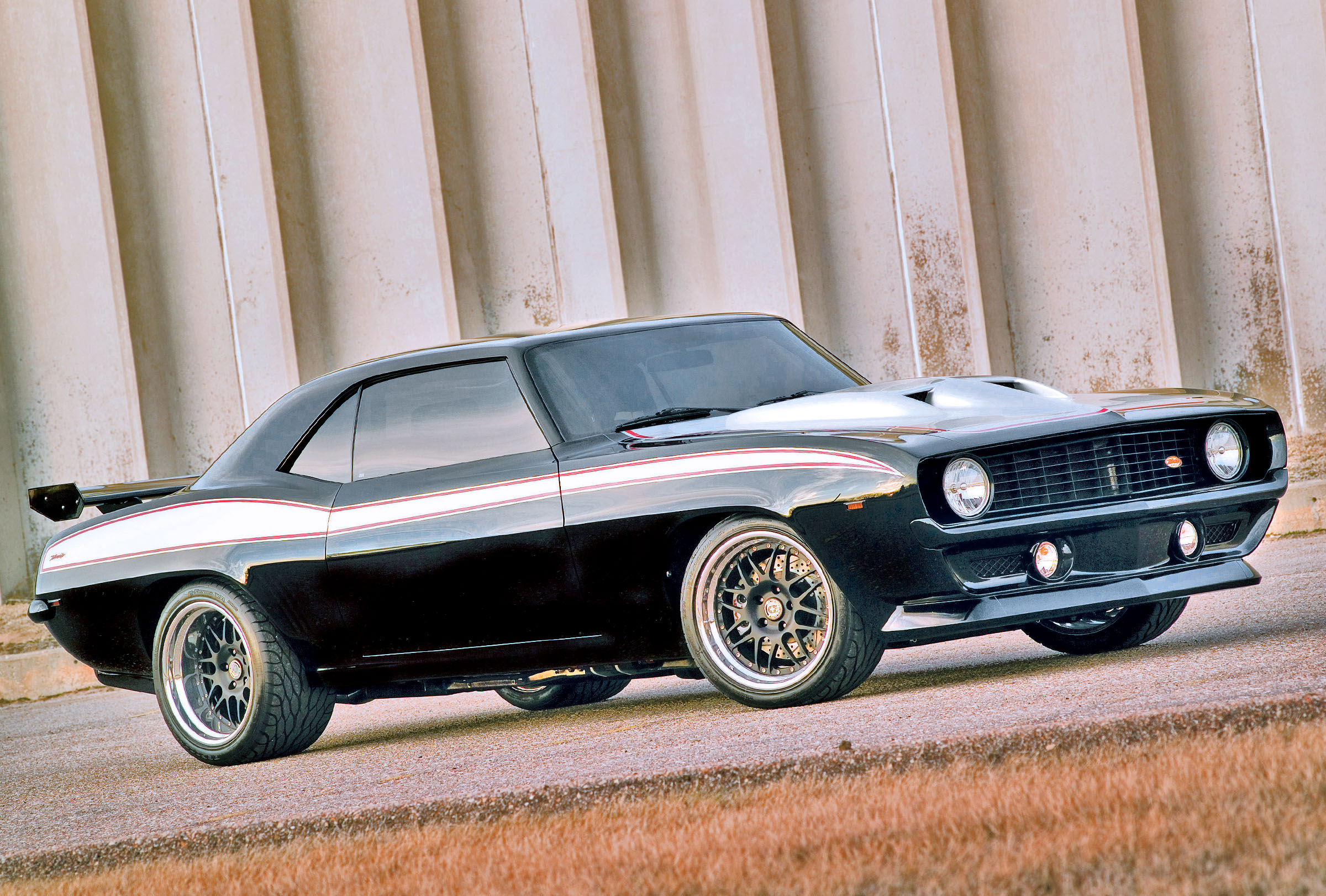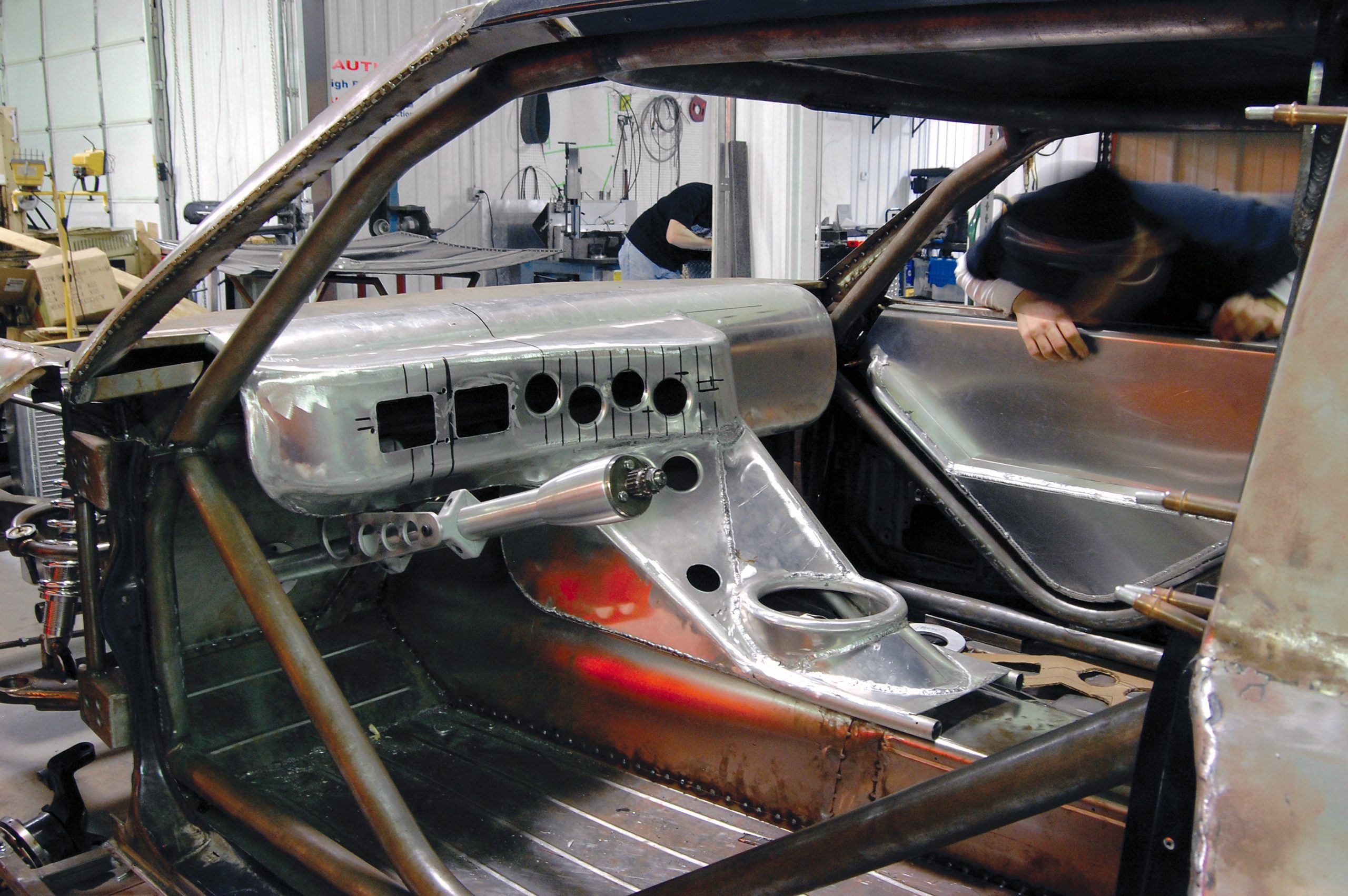The Birth of a Powerhouse

The birth of the Mark IV 396 for public consumption occurred back in 1965. Its predecessor, the Mark I, started in 1961 on the drawing board, was finalized and built in late 1962, and was unveiled in race trim in 1963. It set the racing world on its collective ear at Daytona and other races, and then it disappeared, going back to Chevrolet Engineering for further development. Seeing that you could step up and possibly own the Marilyn Monroe of big-block engines, serious racers and enthusiasts had to sit on their hands for two full model years (1963 and 1964) before the son of this absolute powerhouse could be ordered.
Chevrolet did a nice job of advertising its arrival. The “Mark IV Turbo Jet” was mainly advertised in Impala Super Sport convertibles and the like for towing and all-around driving superiority. As a result, its sales far surpassed those of the engine it replaced, the 409. The 409 certainly did a superior job on the street, dragstrips and short tracks, but its smallish ports and somewhat heavy pistons were not engineered for major NASCAR high-bank racing, so it was replaced with newer technology. No flaws, no inferiority–the new engine was engineered from the start to produce massive foot-pounds of torque. When given bigger ports, more compression, a high-lift camshaft and superior induction, it ran great to 6400 rpm and still had impressive bottom-end and mid-range power. But to succeed in NASCAR competition, a big-port, staggered-valve, high-rpm engine was essential.

So, why 396 cubic inches and not 427 or 429? The sizing of the 396 was done to appease GM’s in-house rule of “400 cubic inches maximum in midsize cars.” Note that we did not say “full-size.” Chevrolet Engineering had future plans here. Everyone voted that it was much more important to get the midsize Chevelle up to performance capability than it was to have an “over 400cid” engine in its big car. In all reality, the 396 could have been a 376 and it still would have been super competitive. Why? This engine was GM’s only big-block that had truly superior heads and induction. No other GM big-block could rev 7500 rpm in race trim, much less all day long. That’s pretty much sums it up for NASCAR competition.
STREET & STRIP 396
In 1965, big-block sales did not commence until mid-February. The RPO L35, 326hp 396 cost about $158 more than the base 283 V-8. In all, 55,454 were sold. Since it was a first-year powerplant, one Chevrolet was relying on, this was a good sales number. The RPO L78, 425hp 396 cost $293 extra in the Corvette and $369 extra in full-size cars. The difference was due mainly to the radiator and the suspension. Corvette L78 sales tallied 2157, while the L78 passenger car numbered 1838. It is interesting to note that you could get a big-block in any full-size Chevrolet–two-door, four-door or station wagon. Interestingly, in rounded-off numbers, 40 percent of 1965 full-size car sales were sport coupe two-doors. A whopping 50 percent were sedans. The remaining 10 percent were station wagons. Generally, about 80 percent of all 1965 Chevy car sales had a V-8 engine (283, 327 or 396).

The relatively low 425hp 396 sales in 1965 may be misleading, as many buyers were away serving Uncle Sam. Others were up to their eyeballs in earlier Chevrolets, with a modified 327 or 409 under the hood. It wasn’t that they did not want a new 1965 396 Chevy, but it probably wasn’t in most budgets. In 1966, that all would change.
1966 369 & 427
ietly making sure that the Tonawanda plant could assemble an adequate supply of Mark IV big-blocks all year long. You see, the 396 was now hot to trot in the Super Sport Chevelle, and a stroked version–the new 427–was check-marked for Corvettes and full-size Chevys. You should have been there!
The four-speed SS Chevelle, especially the L78, was outrunning everything in its class, and so were the L72 425hp Corvette, Biscayne, Bel Air, Impala and Impala SS. The only other new Chevy that could keep up was the 350hp 327 Nova. If ever there was a Chevrolet performance year that we wish could be replayed over and over, it is 1966. This was ALL brand new! If you’ve never seen an L78 396 Chevelle or a 427 Corvette or a 427 big car leave the starting line with front end high, headers wailing and slicks squealing, you’ve really missed an historical Chevrolet impression. All of these Chevys made a huge statement at dragstrips nationwide. They brought fear into the hearts of many competitors.

At the dealerships, there was a long waiting list for 396 and 427 crate engines. The parts department guys were always crying that they sold 25 or more a week and were still back-ordered! Where did these crate engines go? They were installed in ’55-’64 Chevys, boats, vintage iron–you name it.
Let’s call 1965 and 1966 the wild years! Sons indeed learned about big-block power from their fathers, while other young adults read impressions from the car magazines. The Mark IV big-block was in the midst of creating its own industry, just as the small-block did a decade before.
Today, many relive the past in a “perceived” fashion. Cars are restored to perfection and brought out on weekends or to shows. With so many custom goodies available today, a ’65 or ’66 Chevy or Chevelle may appear stock on the outside, but a latter-day 502 MK V big-block could well rest between the front frame horns. The fender emblems may still say “396,” but that’s only to respect the past and fool the present. Hey, it’s 1966 all over again!















